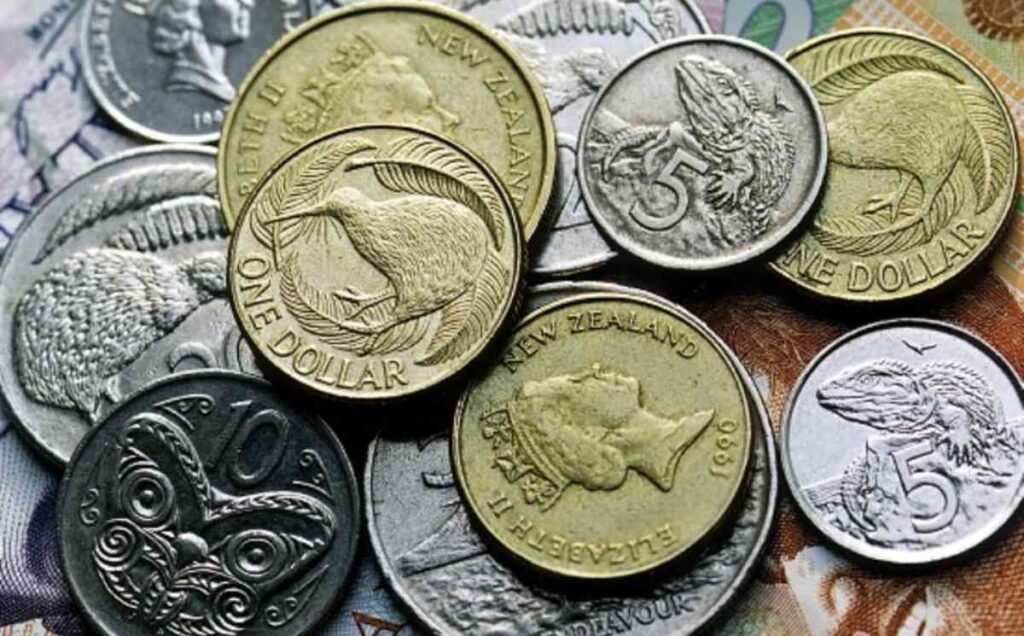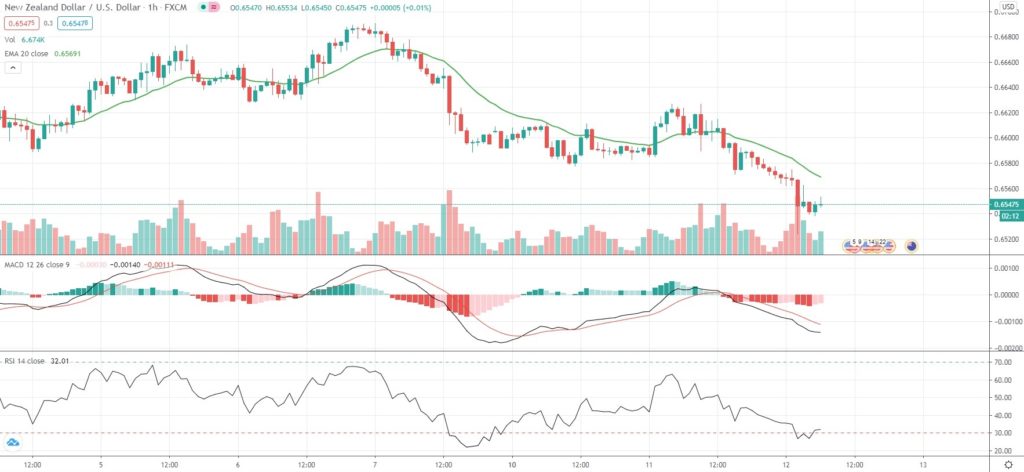
NZD/USD slipped to lows not seen in a month during mid-Asian session on Wednesday, after Reserve Bank of New Zealand bolstered its Large Scale Asset Purchase (LSAP) programme to NZD 100 billion at its policy meeting earlier in the day and noted that “additional monetary instruments” might be deployed.
Since the economic risks remain to the downside and lockdown restrictions were re-imposed in Auckland, RBNZ policy makers emphasized on the possibility of negative interest rates being introduced in the future.
The central bank also kept the official cash rate unchanged at the record low level of 0.25%, in line with expectations.
“Taken together, that’s why interest rates have fallen a few basis points and why the kiwi fell,” Westpac FX analyst Imre Speizer said. “That’s a modest dovish reaction.”
The bank’s board also noted that the nation’s economic activity remained below its pre-pandemic levels, while a sustainable recovery in investment and employment is reliant on the degree to which the coronavirus is contained effectively.
Following 102 days of no new COVID-19 infections, 4 new cases were discovered overnight in Auckland, New Zealand’s largest city. Prime Minister Jacinda Ardern announced that the Auckland region had moved to Alert Level 3 on Wednesday, while the restrictions will remain in place for at least three days. The rest of the country moved to Alert Level 2, which means that “social distancing applies and mass gathering will need to be limited to 100 people.”
Meanwhile, the US Dollar was holding gains against a basket of six major peers, after US 10-Year bond yields rose the most in two months on Tuesday prior to the biggest ever 10-year auction later today.
As of 6:57 GMT on Wednesday NZD/USD was retreating 0.42% to trade at 0.6549, after earlier touching an intraday low of 0.6524, or a level not seen since July 14th (0.6503). The major pair advanced 2.70% in July, which marked its fourth straight month of gains. The pair has dropped 0.73% so far this week.
On today’s economic calendar, at 12:30 GMT the Bureau of Labor Statistics is to report on US consumer prices. The annualized consumer inflation in the country probably accelerated to 0.8% in July, according to market expectations, from 0.6% in June. The latter has been the highest annual inflation since March, as food prices rose 4.5% year-on-year, or at the sharpest rate since December 2011.
The annualized core consumer inflation, which is stripped of prices of food and energy, is expected to remain stable at 1.2% in July, or at the lowest level since March 2011.
Market players are also looking for indications that the political deadlock over the next US coronavirus aid bill can be overcome.
Bond Yield Spread
The spread between 1-year New Zealand and 1-year US bond yields, which reflects the flow of funds in a short term, equaled 11.4 basis points (0.114%) as of 6:15 GMT on Wednesday, or unchanged compared to August 11th.
Daily Pivot Levels (traditional method of calculation)
Central Pivot – 0.6592
R1 – 0.6612
R2 – 0.6647
R3 – 0.6667
R4 – 0.6688
S1 – 0.6556
S2 – 0.6536
S3 – 0.6501
S4 – 0.6465






